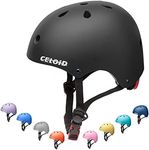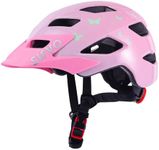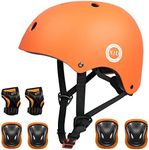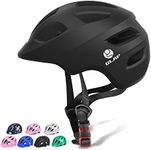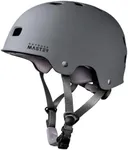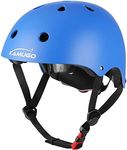Buying Guide for the Best Kids Helmets
Choosing the right helmet for kids is crucial for their safety during activities like biking, skating, or scootering. A good helmet not only protects your child’s head in case of a fall but also encourages them to wear it regularly if it’s comfortable and fits well. When shopping for a kids’ helmet, focus on safety certifications, fit, comfort, and adjustability. Understanding the key features will help you make a confident and informed choice that keeps your child safe and happy.Safety CertificationSafety certification means the helmet has been tested and meets certain safety standards set by organizations. This is important because it ensures the helmet can actually protect your child’s head in case of an accident. Look for labels or markings inside the helmet that show it meets recognized standards. Helmets without certification may not provide adequate protection. Always choose a helmet with a clear safety certification to ensure your child’s safety.
Fit and SizingFit and sizing refer to how well the helmet sits on your child’s head. A helmet that is too loose or too tight won’t protect properly and can be uncomfortable. Helmets usually come in sizes based on head circumference, so measure your child’s head just above the eyebrows. Sizes are often divided into small, medium, and large, or given in centimeters. Pick a helmet that matches your child’s measurement and make sure it fits snugly without being too tight. A good fit means the helmet doesn’t move around when your child shakes their head.
AdjustabilityAdjustability means the helmet can be fine-tuned to fit your child’s head better. This is important because kids grow quickly, and a helmet that can be adjusted will last longer and stay comfortable. Look for helmets with adjustable straps and a dial or slider at the back. These features let you make small changes to the fit as your child grows or if they wear a hat underneath. Choose a helmet with easy-to-use adjustment systems so you can always ensure a secure fit.
VentilationVentilation refers to the holes or channels in the helmet that let air flow through. This is important because it keeps your child’s head cool and comfortable, especially during active play or in warm weather. Helmets with more or larger vents provide better airflow, but even a few well-placed vents can make a difference. If your child tends to get hot or sweats a lot, look for a helmet with good ventilation to keep them comfortable and more likely to wear it.
WeightWeight is how heavy the helmet feels on your child’s head. A lighter helmet is usually more comfortable and less tiring to wear, especially for younger kids. Helmets can range from very light to a bit heavier depending on the materials used. For most children, a lightweight helmet is best, as it won’t put strain on their neck or make them want to take it off. Try to find a helmet that feels light but still offers solid protection.
Padding and ComfortPadding and comfort refer to the soft materials inside the helmet that cushion your child’s head. Good padding makes the helmet more comfortable and helps absorb sweat. Some helmets have removable and washable pads, which is helpful for keeping things clean. If your child is sensitive or picky about how things feel, look for a helmet with extra or softer padding. Comfort is key to making sure your child actually wants to wear their helmet every time.
Style and DesignStyle and design are about how the helmet looks, including colors, patterns, and shapes. While this doesn’t affect safety, it can be important for kids who want a helmet that matches their personality or favorite colors. A helmet your child likes is one they’re more likely to wear without fuss. Let your child help pick the design, but always make sure it meets all the other important safety and fit requirements first.

